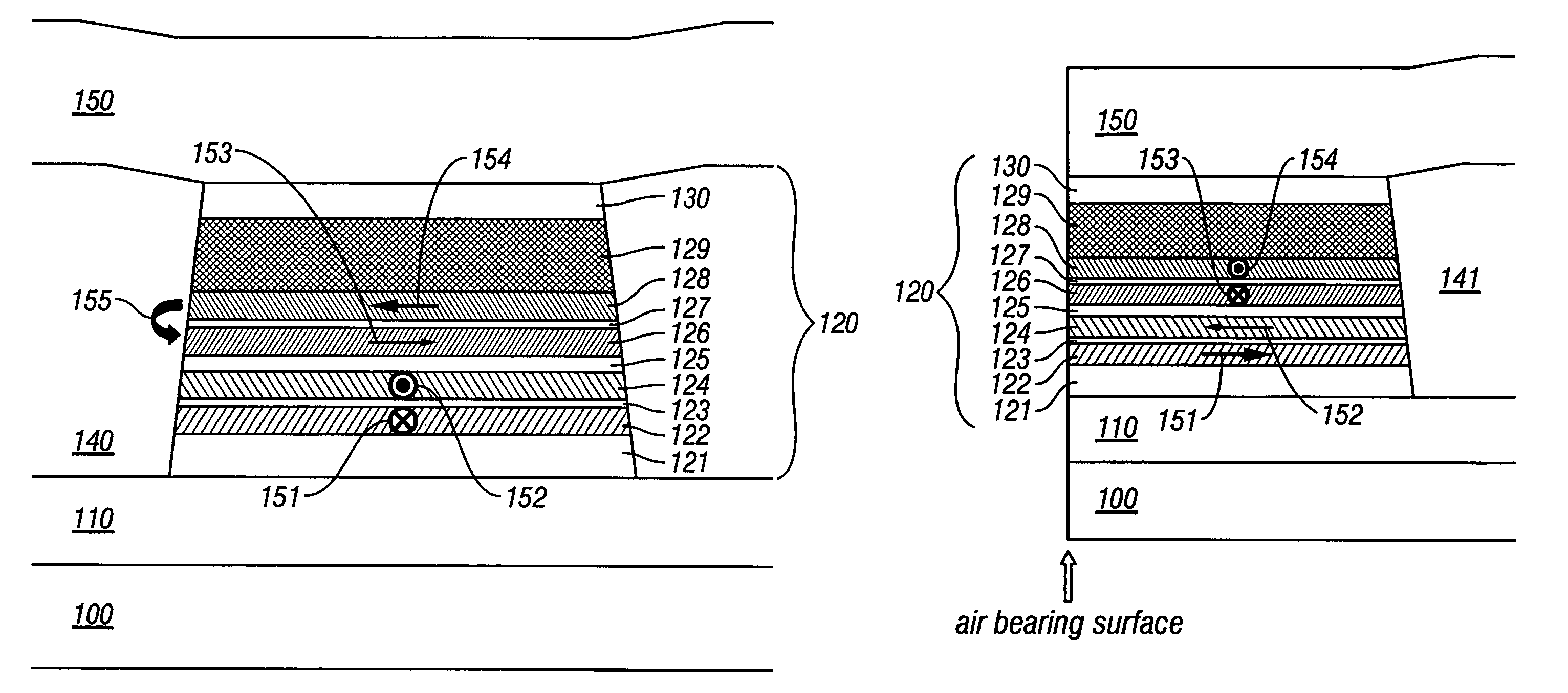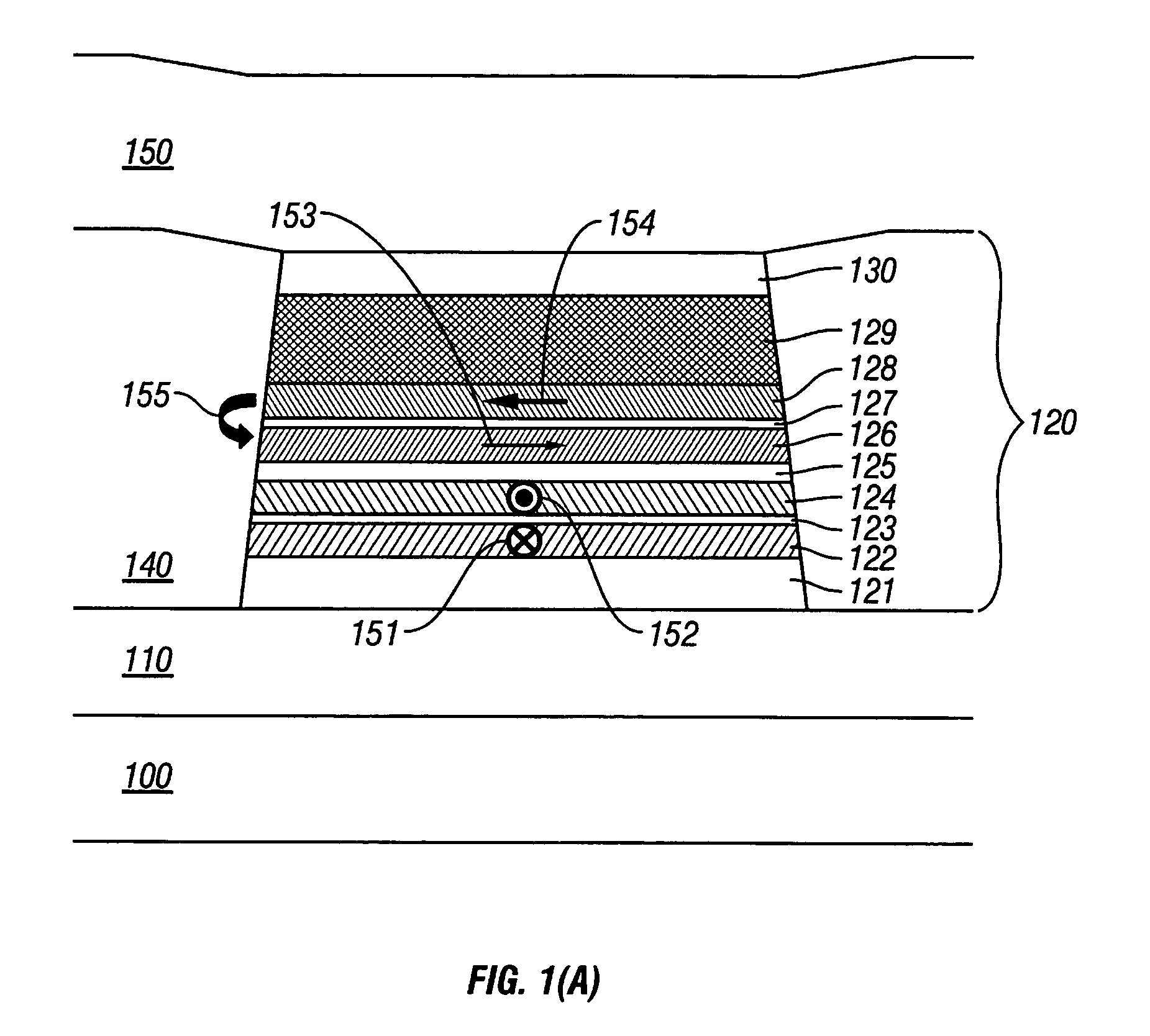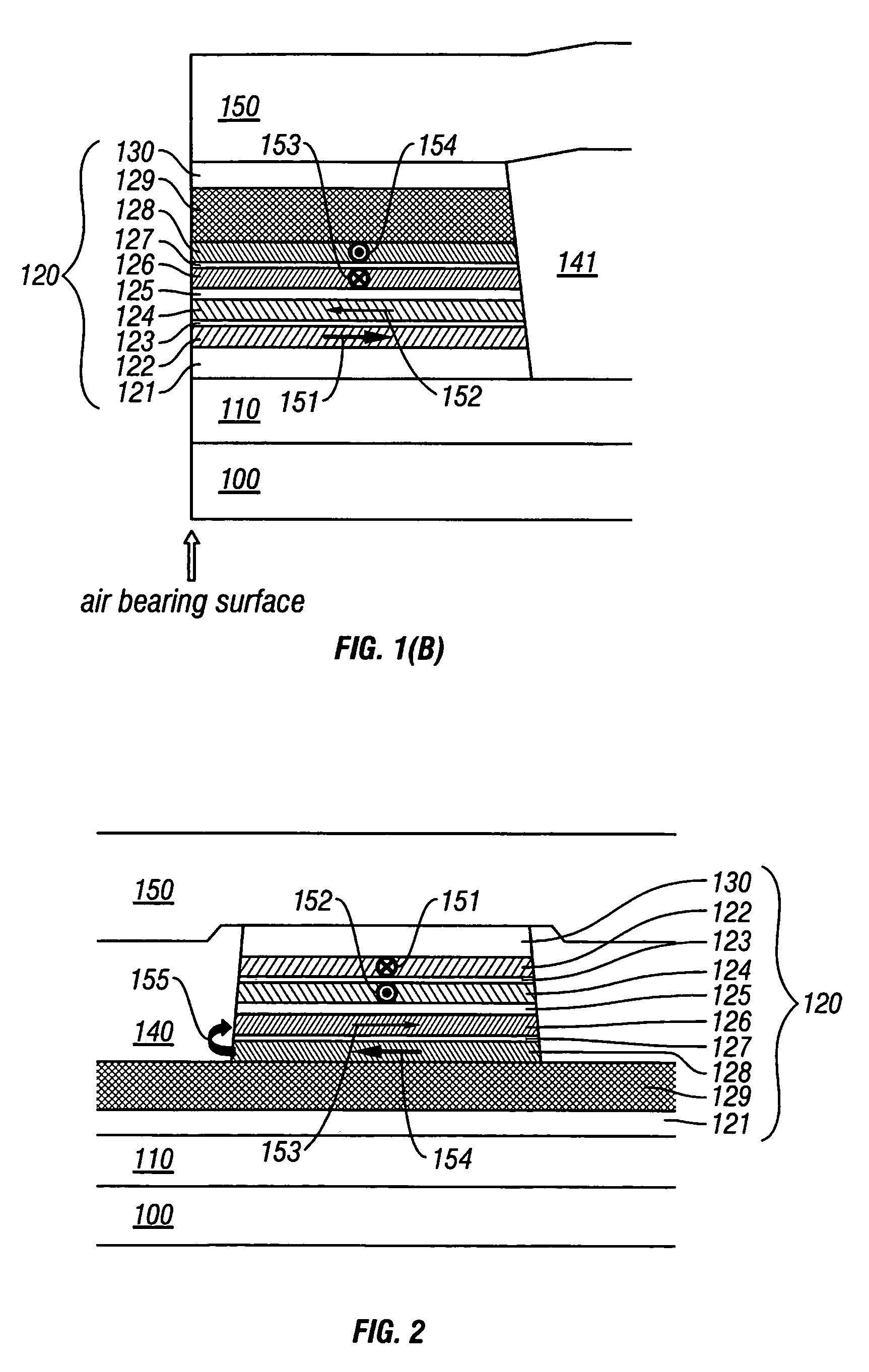Magnetoresistive head with improved in-stack longitudinal biasing layers and fabricating method
a magnetic head and longitudinal biasing technology, applied in the field of magnetic heads, can solve the problems of affecting the symmetry of the reading waveform, reducing the reading sensitivity, and unable to obtain reading characteristics, so as to achieve convenient alignment, suppress barkhausen noise, and high reading sensitivity
- Summary
- Abstract
- Description
- Claims
- Application Information
AI Technical Summary
Benefits of technology
Problems solved by technology
Method used
Image
Examples
first embodiment
[0048]FIG. 1 is a schematic diagram illustrating the first embodiment of a magnetoresistive head of the present invention. FIG. 1(A) is a schematic diagram seen from the air bearing surface, and FIG. 1(B) is a cross-section at the track center in the sensor height direction (a direction perpendicular to the magnetic recording medium). The structure together with an outline of the fabricating procedure of a magnetoresistive head will be described below.
[0049]A magnetoresistive film 120 is formed on a substrate 100 after forming a lower shield 110, and the track width direction is patterned into a desired shape by photolithography, ion milling, or reactive ion etching. Next, an insulator layer 140 is formed at both sides of the magnetoresistive film 120 using a lift-off method. Similarly, in the sensor height direction, the magnetoresistive film 120 is patterned into a desired shape by photolithography, ion milling, or reactive ion etching, and an insulator layer 141 is formed using a...
second embodiment
[0054]FIG. 2 is a schematic diagram illustrating the second embodiment of a magnetoresistive head of the present invention when seen from the air bearing surface. The cross-section at the track center in the sensor height direction is omitted because it is the same as the first embodiment.
[0055]In the first embodiment, a configuration was shown as an example in which the pinned layer is formed on a side close to the substrate 100 in the magnetoresistive layer 120. On the other hand, in the second embodiment, the order of lamination is reversed as the primary layer 121 / antiferromagnetic layer 129 / longitudinal biasing layer 128 / nonmagnetic layer 127 / magnetic free layer 126 / nonmagnetic conductive layer or nonmagnetic tunneling barrier layer 125 / second magnetic layer 124 / antiferromagnetic coupling layer 123 / first magnetic layer 122 / protection layer 130. Additionally, the primary layer 121 / antiferromagnetic layer 129 are not etched in the track width dimension, and they are patterned wid...
third embodiment
[0074]FIG. 8 is a schematic diagram illustrating the third embodiment of a magnetoresistive head of the present invention when seen from the air bearing surface. The basic configuration is the same as the second embodiment so that the details are omitted.
[0075]In this embodiment, the configuration of the pinned layer is fourth magnetic layer 134 / third antiferromagnetic coupling layer 133 / third magnetic layer 132 / second antiferromagnetic coupling layer 131 / first magnetic layer 122 / first antiferromagnetic coupling layer 123 / second magnetic layer 124. Symbols 156 and 157 in the figure indicate the magnetization direction of the third magnetic layer and the magnetization direction of the fourth magnetic layer, respectively. In the first and second embodiments, the configuration of the pinned layer included two magnetic layers. But, when the configuration contains more than three magnetic layers as, for instance, in Co—Fe / Ru / Co—Fe and the third embodiment, the magnetization direction is ...
PUM
| Property | Measurement | Unit |
|---|---|---|
| thickness | aaaaa | aaaaa |
| thickness | aaaaa | aaaaa |
| coercivity Hc | aaaaa | aaaaa |
Abstract
Description
Claims
Application Information
 Login to View More
Login to View More - R&D
- Intellectual Property
- Life Sciences
- Materials
- Tech Scout
- Unparalleled Data Quality
- Higher Quality Content
- 60% Fewer Hallucinations
Browse by: Latest US Patents, China's latest patents, Technical Efficacy Thesaurus, Application Domain, Technology Topic, Popular Technical Reports.
© 2025 PatSnap. All rights reserved.Legal|Privacy policy|Modern Slavery Act Transparency Statement|Sitemap|About US| Contact US: help@patsnap.com



